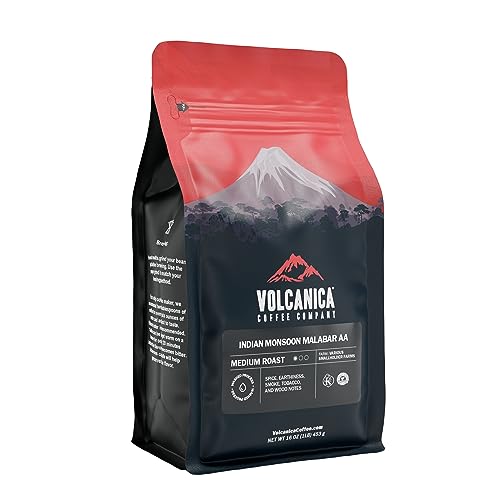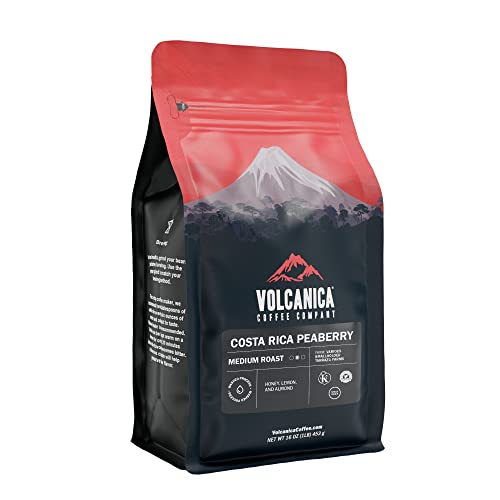Are you a coffee aficionado, always on the lookout for a novel and extraordinary brew? This article will transport you on a journey through the rich landscapes of some of the world’s most luxurious and unique coffee beans. Whether you’re a seasoned coffee connoisseur or an eager newcomer, prepare to expand your coffee horizons.
What you need to delve into:

Trained coffee connoisseurs, known as coffee cuppers, dedicate their craft to identifying the world’s superior coffees hailing from the most distinct coffee-growing regions. These artisans assess the unique characteristics of coffee grown in various tropical nations spanning Central and South America, Africa, and Indonesia.
Were you looking for:
An evaluation of a coffee’s quality involves examining several factors, including its body, aroma, acidity, balance between sweetness and bitterness, and its lingering aftertaste. For connoisseurs and enthusiasts alike, a light-to-medium roast is often preferred for high-quality coffees, as it best highlights the unique flavors of its origin, rather than masking them in a darker roast.
In recent years, lighter roasts have dominated the scene, thanks to the influx of premium coffees that showcase the distinct tastes of their native tropical lands.
Zimbabwe
Zimbabwe’s coffee delights the palate with its aromatic profile that balances wine-like acidity and tantalizing citrus undertones. Renowned for its harmonious taste and playful aftertaste – a product of wet processing – Zimbabwe Chipinge Coffee holds a special place in the hearts of coffee aficionados, rivalling even the highly acclaimed Kenyan varieties.
Kenya
Kenyan coffee is lauded for its full-bodied richness and winey acidity, a signature trait of African brews. The tantalizing aroma evokes the taste of ripe fruit and berries, while its clean and robust complexity sets it apart as one of the top-rated coffee beans globally.
Kenya’s coffee industry thrives in the country’s high plateaus enriched with volcanic soils. Several coffee plant varietals are grown here, including SL28, SL34, Kent, Ruiri 11, African K7, and Blue Mountain. The prestigious Kenya AA Coffee, cultivated at elevations above six thousand feet and recognized by the Kenya Coffee Grading system for its superior quality, is particularly esteemed among Kenyan coffees.
Mocha java
Mocha Java Coffee Beans represent one of the oldest coffee blends known to the world. These beans offer an exceptional balance, resulting from the complimentary qualities of two gourmet coffee beans: Arabian (Yemen) Mocha coffee beans bring an intense, wild element, while the Indonesian Java Arabica infuses the blend with a vibrant liveliness that lends a positive energy to the smooth brew.
Jamaican blue mountain
Jamaican Blue Mountain coffee impresses with its full-bodied brew, highlighted by a silky texture and excellent balance. This coffee lacks bitterness and is sweet, with notes of chocolate. It also offers a slight nutty aroma. The peaberry coffee beans grown in Jamaica’s Blue Mountains hold a special place among the world’s finest coffees, particularly for espresso lovers.
Nicaragua
Nicaragua is home to the world’s largest exotic coffee beans, known as Elephant Beans. Produced from the distinct coffee plant cultivar known as the Traditional varietal, these beans are known for their strong and highly concentrated flavors in the brewed cup, offering a lively acidity and clean taste, best enjoyed with a medium roast.
Sulawesi
Hailing from a lush tropical island in Indonesia, Sulawesi Toraja Coffee is among the most sought-after coffee beans in the world. These beans offer a mild acidity and a smooth, silky body. Their rustic sweetness becomes almost fully developed in a dark roast, which also accentuates the smooth finish of the brew. Sulawesi coffees are often referred to as intense and brooding, with pronounced earthy characteristics that set them apart from Java Arabica coffee.
Tanzania
Tanzanian coffee beans are known for their unique Peaberry variety – coffee cherries that contain a single, whole bean rather than the usual two half-beans. These peaberry beans are valued for their robust and full-bodied taste. The coffee is admired for the acidity and medium body of the elegant fruit flavors, and traces of blackcurrant that blend into a deliciously sweet finish.
Indian Mysore
India, a global economic powerhouse, has also improved its premium coffee exports alongside its quality of life and economy. This sweet, medium-bodied coffee boasts a fairly mild acidity and rich flavor, tinged with hints of tropical fruit and flavored with spices such as cloves, cardamom, pepper, and nutmeg.
Sumatra mandheling
These gourmet coffee beans from Indonesia feature a full body and robust flavor, along with a vibrant acidity and herbal notes in the aroma. The brewed coffee shimmers with sweet notes of chocolate and licorice, delivering a unique complexity.
Costa Rica
Costa Rican coffees are perhaps best represented by the full-bodied Costa Rica Alajuela Coffee Beans, which are known for their robust flavor and vibrant acidity.
Ethiopia Yirgacheffe
Cultivated in the highlands of Ethiopia at altitudes of around 6,000 feet, Ethiopia Yirgacheffe is world-famous for its distinct fruity and wine-like characteristics, highlighted by floral notes and a bright acidity. Often referred to as “the birthplace of coffee,” Ethiopia continues to produce this elegant, high-quality bean, satisfying coffee lovers around the world with its distinctive taste.
Guatemalan Coban
Guatemala Coban Coffee Beans are valued for their amazing body (mouthfeel) and spicy flavors in the brewed cup, along with wonderful fruit notes in the acidity and a good aroma that shines with floral notes and light wine tones. Guatemala Antigua Coffee and the highly regarded Guatemala Huehuetenango Coffee are other outstanding Guatemalan coffees, which also deliver a sweet floral aroma and a good finish.
Panama
Panama Geisha, or Gesha, is one of the most exclusive and expensive coffee beans in the world. It originates from the Gesha region of Ethiopia, but it was Panama’s volcanic soil and unique climate that allowed this coffee to fully express its potential. Panama Geisha coffee beans are celebrated for their jasmine aroma, bright acidity, and complex flavor profile that contains notes of tropical fruits, berries, and even tea.
Papua new guinea
These premium coffee beans are usually wet-processed and well-balanced with a delicious multi-dimensional consistency, soft sweetness, and a complex and fruit-toned aroma. These exotic coffee beans come from plants that originated in the popular Blue Mountains of Jamaica, and the taste still resembles the Blue Mountain coffee of old Jamaica. New Guinea Sigri Coffee, New Guinea Arona Coffee, and New Guinea Kimel Coffee are among the respected Papua New Guinea coffees.
Kona
Kona Coffee Beans is probably the most respected of all Hawaii coffee beans, with its delicate flavors and the complexity of its fragrance.
Kona coffee, a unique and slightly expensive arabica variety, grows in the districts of Hawaii. Farmers take extra care to ensure the best Kona coffee. Since much of the coffee is produced on the slopes of the Hualalai and Mauna Loa volcanoes, it has the added benefit of rich, volcanic soil packed with minerals.
The fertile porous and mineral-rich volcanic soil and the climate of sunny mornings, clouds or rain in the afternoon, little wind, and mild nights make Kona Coffee world-renowned and sought after.
Some other gourmet Hawaiian coffees have garnered coffee judges’ attention in recent years, such as Kau, Puna, Hamakua, and Hilo coffee.
Civet
Kopi Luwak, or civet coffee, is the world’s most expensive coffee, produced from coffee cherries eaten, partially digested, and excreted by the Asian palm civet. It has a complex flavor profile with a distinct aroma, low acidity, and an aftertaste that lingers. Despite the unusual production process, Kopi Luwak is highly sought after for its smooth, caramel-like flavor.
Other factors
Arabica coffee plants produce the vast majority of exotic coffee beans. These coffee plants are grown in the world’s prime coffee-growing regions at high altitudes. As a result, the climate in these regions is ideal for sensitive Arabica plants that need cool temperatures but never below freezing.
When growing specialty coffee beans, the main condition is that they are grown in fertile soils with proper nutrient balance and good drainage. It is also vital that the coffee cherry be picked precisely at optimum maturity, not too early and not too late – handpicking (or’ selective picking’) is the best form of harvesting for these coffees is handpicking (or ‘selective picking’).
Timely and proper coffee cherry processing is the next step in ensuring that coffee beans are ranked among the world’s best.
This is critical because the coffee bean flavors and aromas can be contaminated if not treated properly at this sensitive point (e.g., by mold, etc.).
The beans are known as green coffee beans (milled but not roasted) after processing and are ready for roasting. The roasting of the coffee beans must be adapted to the specific type of bean to bring out the bean type’s best qualities and completely improve the tastes and aroma.
After roasting, the coffee beans must be de-gassed. They should then be delivered quickly to the customer, preferably in a valve-sealed container, so that the fine qualities of the beans are not harmed by any gases still released from roasting and so that oxygen does not reach the container, which would also harm the beans’ fine tastes and aromas.
All right, we’re nearly there. You are in control of the fresh-roasted gourmet coffee beans, and there are only two things left to do: grind the coffee and brew the coffee. To prevent overheating the beans, use a conical burr grinder as a traditional blade coffee grinder would do. Burr coffee grinders also give a more consistent ground size for optimum brewing.
Best way to brew exotic coffee
The best brewing technique to bring out the best coffee beans’ finest qualities is the French Press Method. Gauge the water temperature, the amount of ground coffee you use, and how long you allow the coffee to be steep, all according to your preference.
Then sit back and enjoy your perfect coffee cup.
Disclaimer: This post contains affiliate links, which means I may receive a small commission, at no extra cost to you, if you make a purchase using these links. Remember to support us by purchasing through the Amazon/Walmart/Impact Radius links provided. Last update on 2024-04-23 / Affiliate links / Images from Amazon Product Advertising API
Disclosure: No compensation or free products were received in exchange for writing this review.

Editorial Staff
The editorial staff at Crazy Coffee Crave is a team of coffee enthusiasts & Baristas who enjoy the one thing we all think about as soon as we get up in the morning. Trusted by thousands of readers worldwide.























